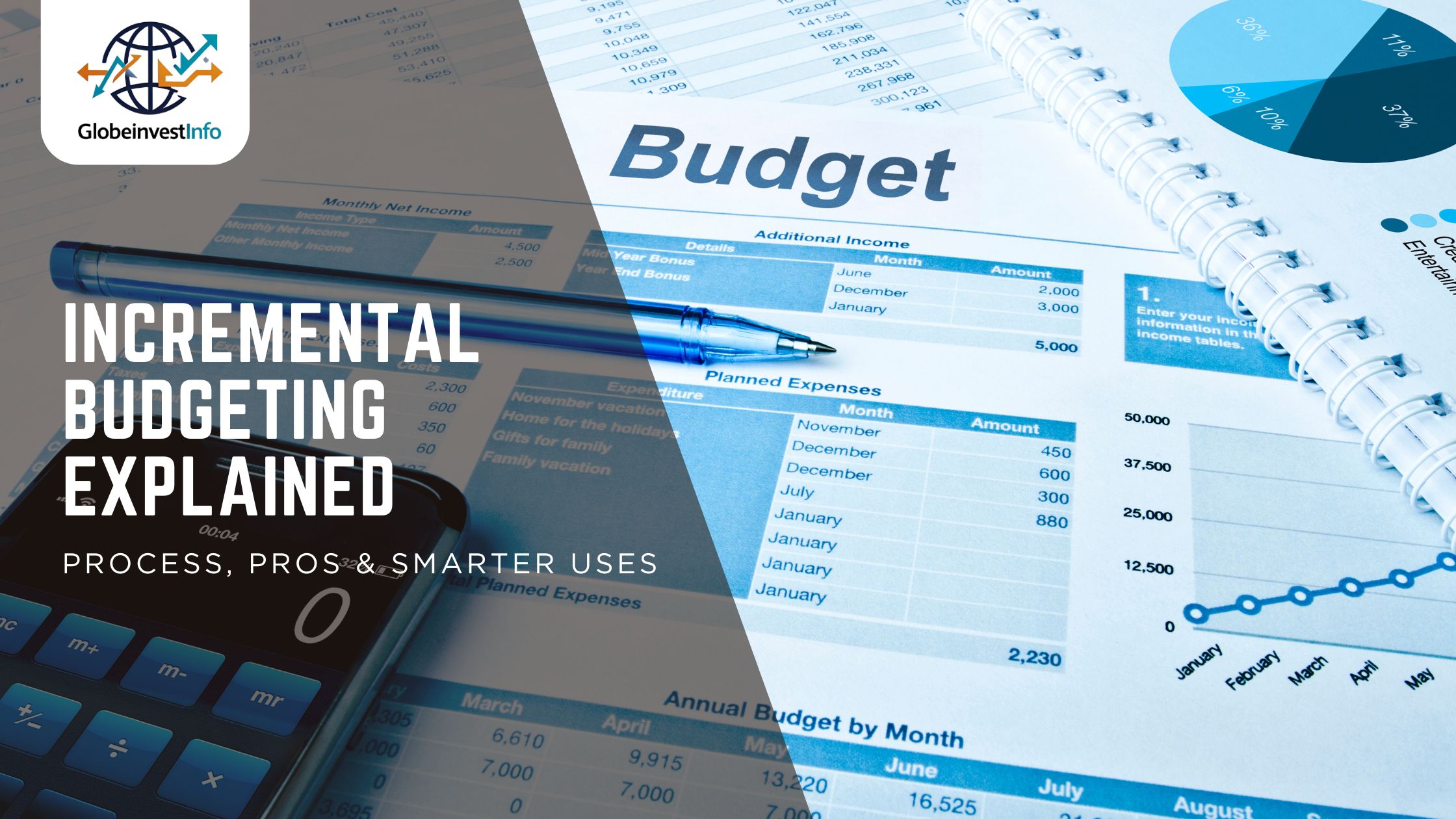Many professionals wonder, what is an incremental budget and whether it still works today. You might struggle with budgeting from scratch. That drains time and energy. A small tweak from last year seems easier but can hide inefficiencies. This guide explains what is an incremental budget clearly. It shows how small adjustments become a fast, reliable tool—if done right.
What Is an Incremental Budget?
An incremental budget is a method where the new budget starts with last year’s figures, then adjusts them by a set percentage or fixed amount. These changes may account for inflation, new projects, or cost increases. Unlike zero-based budgeting, which builds from scratch, this approach assumes the previous budget was generally accurate and needs only updates.
This method is common in governments, schools, and stable companies where expenses and income do not change dramatically year to year.
How Incremental Budgeting Works: Step-by-Step
- Review the previous budget – Start with last year’s approved budget.
- Identify adjustments – Decide what needs to go up or down, such as salaries or utility costs.
- Apply percentage or fixed changes – For example, add 3% to account for inflation.
- Review for accuracy – Ensure changes align with operational and strategic needs.
- Approve and implement – Once approved, it becomes the budget for the new period.
Example:
If last year’s marketing budget was $100,000, and you expect costs to rise by 5%, the new figure would be $105,000.
Advantages of Incremental Budgeting
- Speed – Much faster than building a budget from scratch.
- Ease of use – Simple to calculate and explain.
- Stability – Keeps funding consistent, which is helpful for long-term projects.
- Low resource requirement – Does not need large amounts of data or complex forecasting tools.
Drawbacks of Incremental Budgeting
- Carries inefficiencies forward – If last year’s budget had waste, it remains.
- Encourages “use it or lose it” spending – Departments may spend leftover funds unnecessarily.
- Less responsive to change – May miss shifts in the market or operations.
- Assumes past figures were correct – Rarely questions whether last year’s allocations were justified.
When to Use Incremental Budgeting (and When to Avoid It)
Best suited for:
- Stable industries with predictable costs.
- Organizations with steady revenue streams.
- Public sector and education settings.
Avoid when:
- Your business faces rapid growth or market volatility.
- Innovation and quick adaptation are required.
- You need strict cost control or major reallocation of resources.
Perfect — here’s the continuation with the advanced, gap-filling sections that competitors missed.
Smarter Ways to Use Incremental Budgeting
While the method is straightforward, using it without regular review can lead to waste. Here are ways to make it more effective:
- Audit the baseline every few years – Check if the starting figures still match current needs.
- Differentiate fixed and variable costs – Apply changes only to costs that are likely to shift.
- Tie increases to performance – Link budget growth to meeting clear KPIs.
- Use software tools – Platforms like Prophix or Vena Solutions can automate adjustments and track spending.
- Encourage interdepartmental review – Have teams question allocations to find savings.
Incremental vs. Zero-Based vs. Activity-Based Budgeting
| Feature | Incremental Budgeting | Zero-Based Budgeting | Activity-Based Budgeting |
|---|---|---|---|
| Starting Point | Last year’s budget | Build from zero | Cost per activity |
| Time Needed | Low | High | Medium |
| Cost Control | Low to medium | High | Medium |
| Best For | Stable operations | Cost-cutting, fresh planning | Process improvement |
| Main Risk | Waste carried forward | Time-consuming | Data-heavy |
This comparison helps you choose the right method for your context.
Behavioral Bias in Incremental Budgeting
One often-overlooked aspect is “status quo bias.” This is the tendency for decision-makers to keep things the same, even if conditions have changed. It explains why some companies stick with outdated budgets. Breaking this cycle requires leadership commitment to periodic reviews.
Performance Tracking After Implementation
An incremental budget is not “set and forget.” Tracking is essential to make sure adjustments deliver value:
- Variance analysis – Compare actual spending vs. budget.
- Monthly reviews – Spot and address over- or under-spending early.
- Department reports – Require short, clear spending justifications.
Real-World Example: Department Budget Adjustment
Imagine a university’s IT department with last year’s budget of $500,000. Inflation is expected to raise costs by 4%, and a new cybersecurity system requires $20,000. The updated budget would be:
- Base budget: $500,000
- Inflation increase: $20,000
- New system: $20,000
- Total: $540,000
This shows how the method applies both general increases and specific one-time costs.
FAQ: Incremental Budgeting
What is an incremental budget in simple terms?
It’s a budget that starts with last year’s figures and adds or subtracts a set amount or percentage.
Who uses incremental budgeting?
It’s common in government departments, schools, and stable companies with predictable expenses.
Why do companies choose incremental budgeting?
It’s fast, easy to prepare, and avoids rebuilding the budget from scratch.
How often should an incremental budget be reviewed?
At least once every two to three years to ensure the baseline still fits current needs.
Can incremental budgeting cause waste?
Yes. Without review, inefficiencies from past budgets can carry forward.
How does incremental budgeting differ from zero-based budgeting?
Zero-based budgeting starts from zero, while incremental budgeting adjusts last year’s numbers.
What is the main disadvantage of incremental budgeting?
It may ignore major changes in market or business conditions.
Is incremental budgeting good for small businesses?
Yes, if their revenue and costs are stable, but it should be reviewed regularly.
Will software make incremental budgeting better?
Yes. Tools like Prophix or Vena Solutions help automate updates and track spending.
Where can I learn more about business budgeting?
You can read more on Globe Invest Info where we publish finance and business guides.
Summary
Incremental budgeting offers a simple way to plan finances by adjusting past figures. It works best in stable settings where costs and income don’t change drastically. To make it more effective, audit the baseline regularly, track performance, and combine it with smart decision-making. Used wisely, it saves time while keeping budgets aligned with real needs.
If you found this guide useful, share it with colleagues and leave your thoughts in the comments. For more expert guides on business, finance, and investing, visit Globe Invest Info — your trusted source for quality articles on business ideas, side hustles, market news, and smart money management.

David Rooy is a finance writer and market analyst specializing in business, investing, and market news. He delivers clear, actionable insights to help readers stay informed and make smarter financial decisions.

